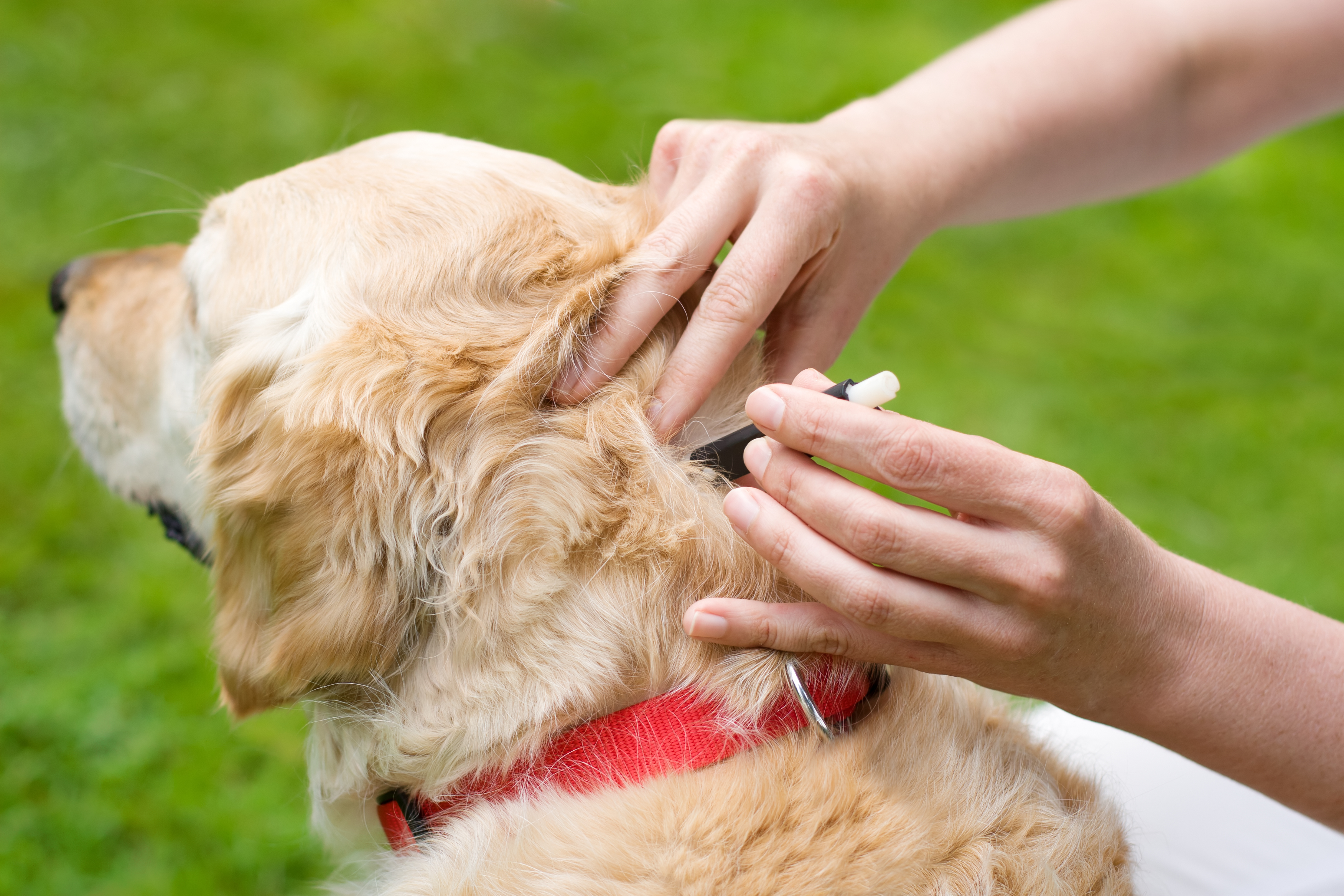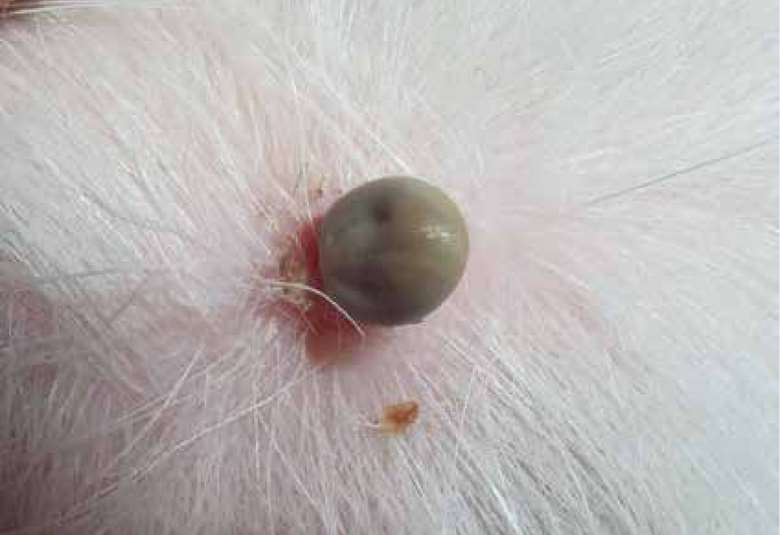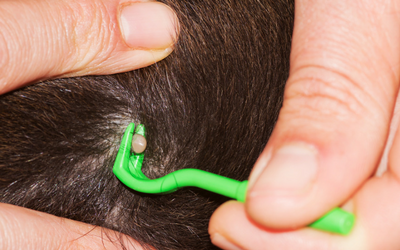Ticks and Your Pet
Ticks are tiny but pesky parasites that feed on blood and it’s only when they’re fully fed that they become easily felt or seen. Despite their tiny size, they can be a big problem because they carry multiple debilitating diseases (including Lyme disease) that are harmful to pets. That’s why it’s important to know where you’re most likely to come across ticks and how you can protect your pet from being bitten by one.
Ticks’ Favourite Hunting Grounds
The peak time for ticks is early spring through fall when temperatures are warmer. As soon as temperatures rise above 4-5 deg C, ticks start to become active and seek out unsuspecting prey. Unfortunately for those in warmer climates, that means ticks can strike all year long.
A few of the tick’s favourite hiding spots include areas with tall grass, bushes, leaf litter and even sandy beaches. However, even a well-kept backyard can hide ticks. That’s why it’s important to check your pet for ticks after each walk and hike that takes you off cement walkways during the warmer months.
The Different Kinds of Ticks
Ticks are usually black or brown in colour, but turn a shade of greyish white once they’ve been feeding for about 24 hours. The type of tick that your pet will be susceptible to depends on the geographic region in which you live. The most common varieties of ticks in North America are:
- Black-Legged Deer Ticks
- American Dog Tick
- Brown Dog Tick
- Lone Star Tick
- Gulf Coast Tick
Different species of ticks can transmit different diseases. For example, it is primarily the Black-Legged Deer Tick that transmits Lyme Disease to people and pets.
Ticks on Dogs

What Do Ticks Look Like on Dogs?
Ticks come in many shapes and sizes. When they first latch on, they’ll look black or brown and are as small as a pin head, but once it has fed itself on your pet’s blood, they can grow to a size of a coffee bean and look greyish white in colour. At a glance, they might look like a wart or mole on your pet, but if you look closer, you’ll be able to spot the tick’s legs.

A picture of a tick embedded in a dog source: Veterinary Nurse
How to Find Ticks in Dogs
When it comes to finding ticks on your pet, it’s not just the furry flanks you need to be worried about. Ticks can be found hiding on your pet’s head, neck, in between their toes, inside their ears and on their legs.
Run your fingers through your pet’s fur with a gentle pressure to feel for any small lumps. If you feel one, take a closer look to examine the area for the tick’s legs.
How to Remove a Tick From a Dog
The longer a tick stays on your dog, the greater the chance of transmitting infection. Ticks must be removed as soon as they are found, ideally within 24 hours before they become fully engorged. If your pet is receiving a vet-recommended preventive medication, the tick will die before any diseases can be transmitted.
Whether you remove ticks yourself or seek help from your vet, you must ensure that the entire tick is removed—Including its very small head. Slow, steady traction on the tick with good tweezers or a tick fork will ensure that no parts of the tick are left behind. Be sure to pull straight outward—perpendicular to your pet’s skin. Even a small portion of the head left under the skin can increase the risk of infection. Be sure to avoid squeezing the tick’s body while removing the parasite.
Afterwards, the tick can be disposed of by flushing it down the toilet.
Flea and Tick Prevention for Dogs
Thankfully, there are many preventive products on the market that can help keep your pet safe. These include tick collars that protect the head and neck, topical spot treatments, medicated shampoos, sprays, and prescription medications. Your veterinarian will recommend the safest, and most effective preventative program for your pet, and your area. If you live in a region that is known for a high concentration of Black-Legged Deer Ticks, your vet may also recommend a Lyme disease vaccine.
You may also want to consider the following preventive measures that can help make your garden less hospitable to ticks:
- Remove fallen leaves regularly from your yard and dispose of debris
- Mow your lawn regularly to keep it relatively short
- Remove tall weeds
- Try to restrict your pet’s play area away to keep them away from shrubs and bushes
Please note that these preventive procedures are not a substitute for your pet’s annual check-up and preventive medications from your vet. It’s important to get your pet tested for tick related illnesses, especially if you live in an area that is inhabited by ticks.
Note: Cats are extremely sensitive to some insecticides used in canine tick repellants. It’s very important not to use tick products meant for dogs on your cat.
Tick Bite Symptoms in Dogs
The most common tick-borne diseases that affect dogs is Lyme disease, Ehrlichiosis, Anaplasmosis, Rocky Mountain Spotted Fever, Babesiosis, Bartonellosis, and Hepatozoonosis. Without preventative medication for your dog, a tick-bite may cause: vomiting, fever, swelling around joints, lameness and lethargy.
Tick Treatment for Dogs
If your dog is not on a preventative medication, you can take the tick to your veterinarian for species identification. This will allow your veterinarian to tell you if your pet is at risk for tick-borne diseases. If you find a tick on your pet, and you are unsure of what to do, consult your veterinarian for more advice.
Ticks on Cats

What do Ticks Look Like on Cats?
Ticks are a size of a pinhead when they first latch onto a cat and are black or brown in colour, but as they feed they grow in size and will look greyish white in colour. At first glance, it might look like a skin tag, a wart or a mole but if you take a closer look you’ll be able to spot the tick’s legs.

How to Find Ticks in Cats
Every time your cat comes inside, check them for ticks by running your fingers along their fur to feel for any bumps and lumps. The most common areas ticks like to latch onto are the head, ears, cheeks, eyelids and under the collar. If you feel a lump or bump, examine the area thoroughly for legs.
How to Remove a Tick From a Cat
Ticks should be removed as soon as they are found, ideally within 24 hours before they become fully engorged. The longer the tick stays in your cat, the greater the risk of infection is.
Luckily, If your pet is receiving a vet-recommended preventive medication, the tick will die before any diseases can be transmitted.
Whether you remove ticks yourself or seek help from your vet, you must ensure that the entire tick is removed—Including its very small head. Slow, steady, traction on the tick with good tweezers or a tick fork will ensure that no parts of the tick are left behind. Be sure to pull straight outward—perpendicular to your pet’s skin. Even a small portion of the head left under the skin can increase the risk of infection. Be sure to avoid squeezing the tick’s body while removing the parasite.
Afterwards, the tick can be disposed of by flushing it down the toilet.
Tick Prevention For Cats
If your cat spends time outdoors, they are more likely to get a tick bite sleeping, prowling or hunting through long grass, bushes and leaf litter.
If you use regular tick prevention medication, a tick will die 24-48 hours after latching on to your cat.
There are also many tick repellent products on the market, like tick repellent collars that will prevent ticks form latching onto your pet in the first place. Your veterinarian can recommend the safest product to use on your cat.
Lastly, regular checking your pet every time they come back inside can stop a tick from fully embedding itself into your cat and causing further problems.
Note: Cats are extremely sensitive to some insecticides used in canine tick repellants. It’s very important not to use tick products meant for dogs on your cat.
Ticks on Cat Symptoms
Lyme disease, Anaplasmosis, Rocky Mountain Spotted Fever and Babesiosis are common tick-borne diseases that can affect cats. If your cat was bitten by a tick and does not have preventative medication, symptoms may include: fever, lack of appetite, lameness, weight loss, lethargy and itching.
Tick Treatment for Cats
If your cat is not on a preventative medication, you can take the tick to your veterinarian for species identification. This will allow your veterinarian to tell you if your cat is at risk for tick-borne diseases. If you find a tick on your cat, and you are unsure of what to do, consult your veterinarian for more advice.
Adding an optional wellness care to your Pets Plus Us Accident & Illness plan for a little more each month, can help pay for preventative medications and treatments your pet might need to recover from a serious bite or illness.
